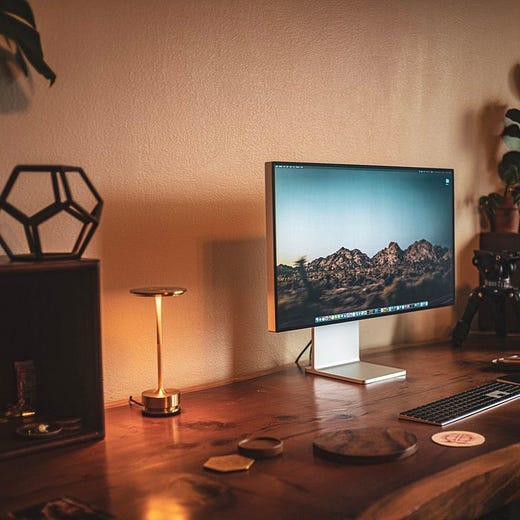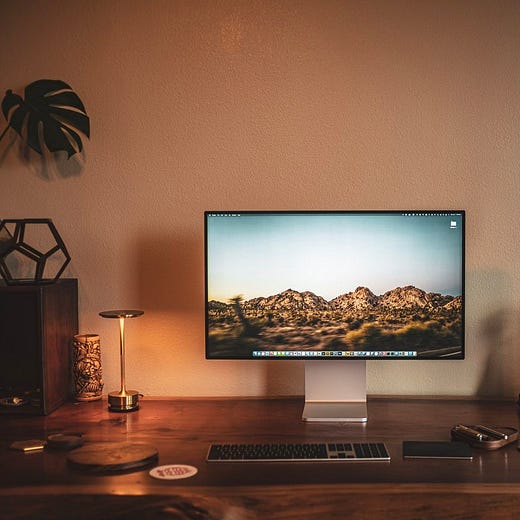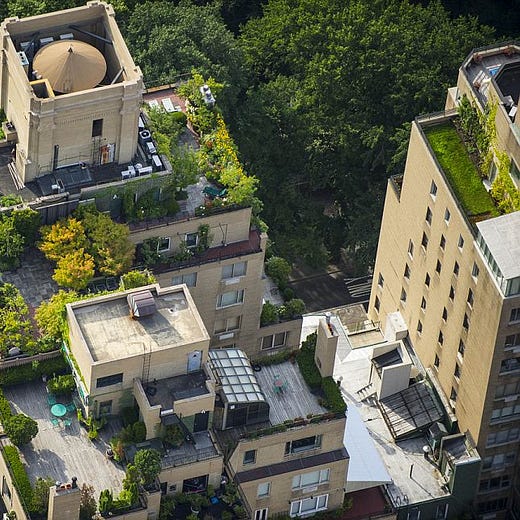👋 Hello! I'm Nate Kadlac, and this is #69 of Plan Your Next. A Sunday newsletter that connects design, creativity, and how you prepare for your next thing.
I put the Tesla in FSD mode and let itself cruise beyond 400 people this past week. I want to welcome all 22 new fans! (I labeled you “fan” in my artful automation so there’s nothing you can do about it.)
Good morning from Los Angeles! What’s new this week?
😵💫 I used Facebook this week. AMA.
💌 I am currently building out an email-based handbook about how to make design decisions more approachable. Is there anything you struggle with? Reply and let me know! View the tweet.
✈️ I’m headed to Minneapolis next week to spend time with former HomeSpotter colleagues and friends. The original plan was to travel with Alie and our 3 mo old daughter—it never gets old saying that—but we had to cancel that due to the recent bubble up in the Delta variant. Rowan’s too young to get a vaccine and she can’t wear a mask.
🤲 If you’re in the giving mood, you can tip me @natekadlac on Venmo, and 100% collected will be used on food deliveries for Alie while I’m gone. Yes, I’m shameless. And yes, I will thank you in next week’s letter!
Can automation be artful?
I very rarely imagine Henry Ford waking up in the early morning and overlooking his factory which is effortlessly pumping out Model T’s thinking to himself, “Damn, this sweet factory is humming like a piece of art.”
But if I do take a moment to imagine it, I can’t help but see the beauty in automated systems producing mechanical art like the Tin Lizzie, Leaping Lena, or the Flivver. (Colloquial names given to the Model T.)
There are many differences between Henry Ford and myself. First, I’m presently breathing and he’s not. Second, within days of the announcement of the Model T, he had 15,000 subscribers on a list compared to my 421 after a year of spamming your inbox.
He obviously knew a thing or two about creating demand and designing systems to match those orders.
Henry Ford’s factory originally built the Model T in 12 hours, 8 min. Within 6 years, his factories were producing the same car in just 93 minutes.
Today, finding ways to use automation is desired by many marketers and creators. You hook up a Typeform to Zapier to Convertkit and bing, bang, boom, you’ve got your funnel, right?
In the business book The E-Myth, the business role of the manager would drool over the repeatable systems she could manifest. But a problem with automation design is how much life they suck out of your interactions. It’s like a No-Code automation tool that promises to put your brand “front and center” by asking for your favorite 6-digit hex value.
Templated automation has its faults, but where does that leave us?
By the time the obsessive Ford Model T factory produced sold its 15 millionth car in 1927, its underbelly remained largely unchanged since 1908.
I believe this is why productivity tools like Notion have such a following. The learning curve can be steep, but you’re able to design your own system fairly easily from scratch. It’s entirely possible to design a finely tuned system using full-page tables and relational databases while keeping it somewhat aesthetically pleasing.
Hell, the product’s aesthetic was even inspired by an old map!
While I can effortlessly spot a Notion website designed in Thailand from my ass prints here in Los Angeles, it’s much closer to appealing to a wide range of users.
Building a beautiful automation
It’s one thing to write a weekly newsletter using plain text, but to treat it like a piece of art using custom illustrations and audio recordings goes against all forms of systems thinking. One of my many faults is applying a thick level of craft to the things I build. I don’t recommend it, and I’m probably revealing an undiscovered blemish in the gray matter of my cranium.
The other side of the rainbow—opposite the side with gold-filled buckets— is to remove some of the anxiety of writing weekly emails but creating proper funnels, marketing automation, and shadow newsletters to gently guide fans into my ecosystem. I’m admittedly a fan of both of these approaches because there’s value in creating art, as well as offloading some of the more mundane jobs which genuinely ease the level of effort.
The downside of most automation systems is they’re set up to quantify everything. Brain-bending questions like button color and size give soul-sucking justification for focusing on the mundane. It takes effort to stand out, and many of the off-the-shelf tools hardly make it easy.
My aspirational bar for Approachable Design is to craft a top-shelf, highly tailored experience for students that is the pearl of cohort-based workshops. A fucking pearl.
But everything surrounding it needs to reflect the brand values the workshop entails, and I can’t leave that solely to the technician in me. It must have systems in place, drawing you in, leaving you wondering and wanting more. Artful automation.
“How did Nate pull this off without gimmicks?” is what I want to hear you whisper under your breath.
It’s the level of beautiful automation that would make Henry Ford perk up from down under and give me a wink and a nudge.
I believe automation can be artful, but it’s going to take some work to reach that bar.
⚡️ Inspiration for next week
Fighting off the minimalistic stereotype
I’ll die on this hill. But even designers struggle with fending off the minimalistic stereotype which is easily associated with creative people. I believe it takes more effort to embrace your style than it is to choose a minimalist version of yourself.
Change your perspective
I once stayed in NYC just above NYU, and I remember how different the city looked. People were hanging out on the rooftops, and I could see dozens of garden patios. It gave me a new perspective of the city and I’m so happy I came across some of these photos.
It takes patience to produce greatness
While this is mainly about how Jackie Chan creates action comedy, I thought the way American fight scenes are shot vs the way Jackie Chan directs was the most interesting. The culprit? Not surprisingly, the cost directly affects the time allotted to shoot a scene. This directly affects the visual style of a fight scene.
👋 See you next Sunday
If you’ve forgotten who I am, here’s a little bit about me. As always, my calendar is open to chat about your next adventure, crazy idea, or if you’re feeling creatively stuck.
Have a great week,
Twitter: @kadlac
Web: kadlac.com
Workshop: approachabledesign.co
























